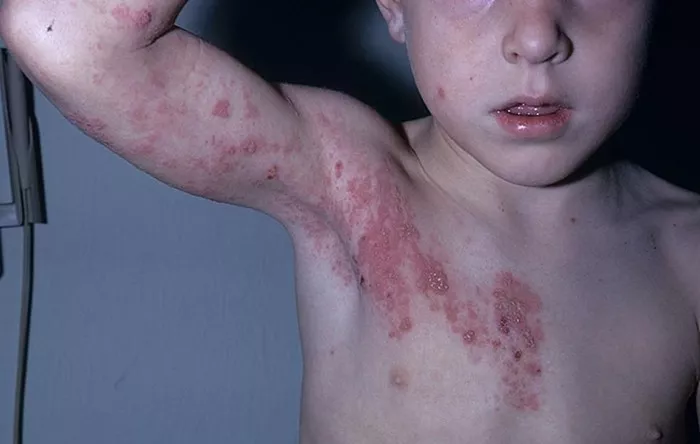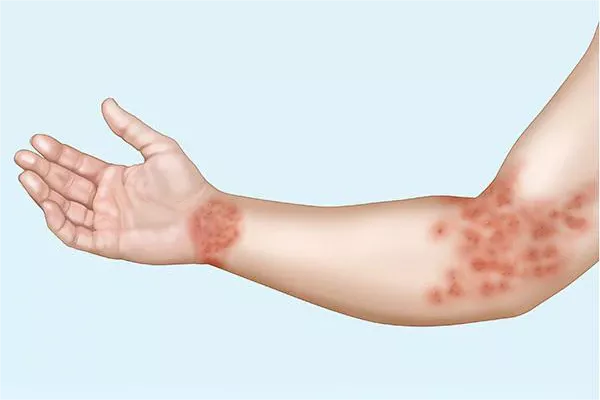Shingles, also known as herpes zoster, is a viral infection caused by the varicella-zoster virus—the same virus that causes chickenpox. While shingles itself is not contagious, individuals with active shingles lesions can transmit the varicella-zoster virus to others who have not had chickenpox or been vaccinated against it, leading to the development of chickenpox, not shingles. To comprehend the contagious stage of shingles, it is imperative to delve into the stages of the disease, its transmission dynamics, and preventive measures.
The Stages of Shingles
Shingles typically progresses through several distinct stages, each characterized by specific symptoms and manifestations:
1. Prodromal Stage: This initial stage is marked by nonspecific symptoms such as headache, fever, and general malaise. Patients may also experience tingling, itching, or burning sensations in the affected area.
2. Rash Development: The hallmark of shingles is the development of a painful, unilateral rash. This rash typically appears as red patches that evolve into fluid-filled blisters over several days. The rash usually follows a dermatomal distribution, meaning it is confined to a specific area of the body innervated by a single sensory nerve.
3. Contagious Stage: While the rash is present, individuals with shingles can transmit the varicella-zoster virus to others who have not been exposed to the virus before. However, it is essential to understand that shingles itself is not contagious; rather, the virus can cause chickenpox in susceptible individuals.
4. Crusting Stage: As the rash progresses, the fluid-filled blisters eventually rupture and form crusts. This stage signifies a decrease in viral shedding and a reduced risk of transmission to others.
5. Resolution: Over the following weeks, the rash gradually heals, and symptoms typically subside. In some cases, individuals may experience postherpetic neuralgia, a chronic pain condition that persists even after the rash has cleared.
Contagiousness of Shingles
The contagiousness of shingles is primarily attributed to the active viral shedding from the rash lesions. During the acute phase of the illness, the varicella-zoster virus is present in the fluid within the blisters, as well as in the surrounding skin lesions. Direct contact with these fluid-filled blisters or respiratory droplets from coughing or sneezing can facilitate transmission of the virus to susceptible individuals.
It is important to note that the risk of transmission is highest when the rash is in the blistering stage, as this is when viral shedding is most abundant. However, individuals with shingles are contagious from the onset of the rash until the lesions have completely crusted over. Therefore, it is crucial for individuals with active shingles to take precautions to prevent the spread of the virus to others.
Preventive Measures
Preventing the transmission of the varicella-zoster virus is paramount, particularly in populations at increased risk of complications from chickenpox, such as infants, pregnant women, and individuals with weakened immune systems. Several preventive measures can help reduce the risk of transmission:
1. Isolation: Individuals with shingles should avoid close contact with individuals who have not had chickenpox or been vaccinated against the virus, particularly those at increased risk of complications. This includes staying home from work or school until the rash has crusted over.
2. Hygiene Practices: Practicing good hygiene, such as frequent handwashing with soap and water, can help prevent the spread of the virus. Individuals should also avoid touching or scratching the rash to minimize the risk of viral transmission.
3. Vaccination: Vaccination is the most effective way to prevent shingles and its complications. The varicella-zoster virus vaccine, commonly known as the chickenpox vaccine, is recommended for all children and adults who have not had chickenpox or been vaccinated against the virus. Additionally, the herpes zoster vaccine is available for adults aged 50 and older to reduce the risk of shingles and postherpetic neuralgia.
4. Antiviral Medications: In certain cases, antiviral medications such as acyclovir, valacyclovir, or famciclovir may be prescribed to shorten the duration and severity of shingles. Early initiation of antiviral therapy within 72 hours of rash onset can help reduce viral shedding and the risk of transmission to others.
Conclusion
In conclusion, understanding the contagious stage of shingles is essential for preventing the transmission of the varicella-zoster virus to susceptible individuals. While shingles itself is not contagious, individuals with active shingles lesions can transmit the virus to others who have not had chickenpox or been vaccinated against it, leading to the development of chickenpox. By recognizing the stages of shingles, implementing preventive measures, and promoting vaccination, healthcare professionals and individuals alike can mitigate the spread of this viral infection and its associated complications.
Related Topics:
Are Shingles Dangerous for the Elderly
The Dangers of Shingles to Pregnant Women: Understanding Risks, Treatment, and Prevention


























